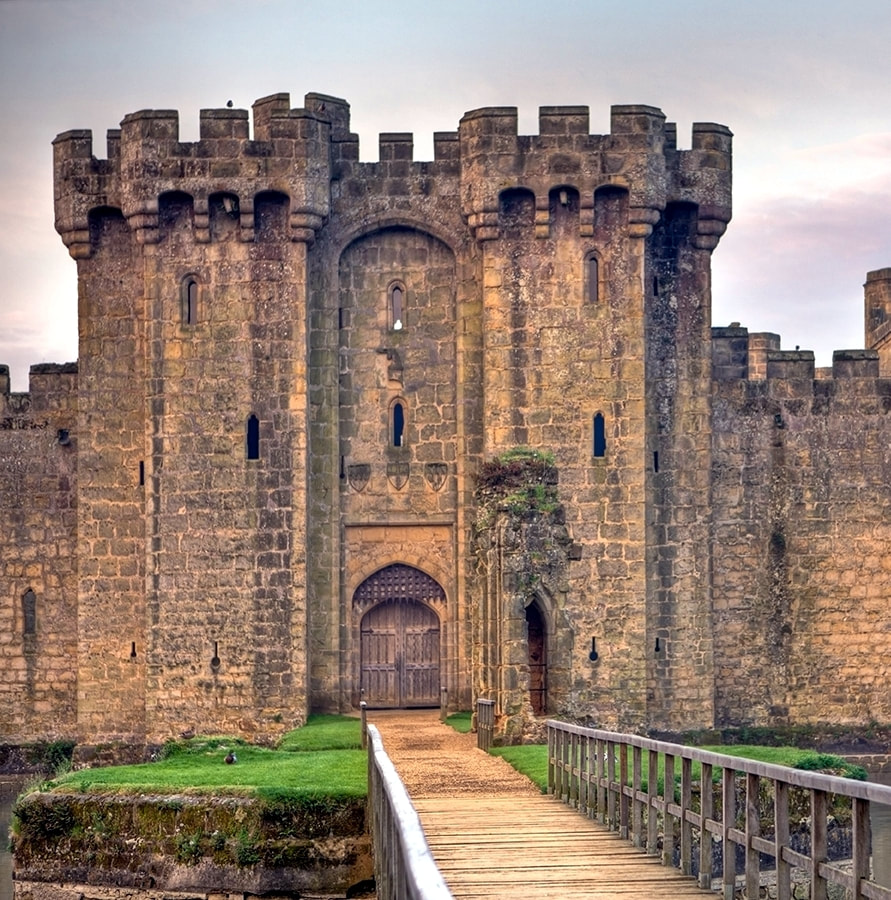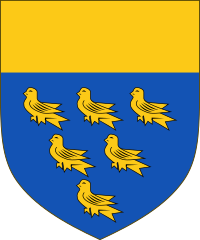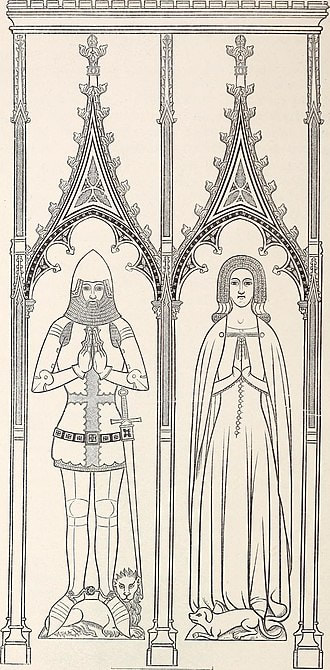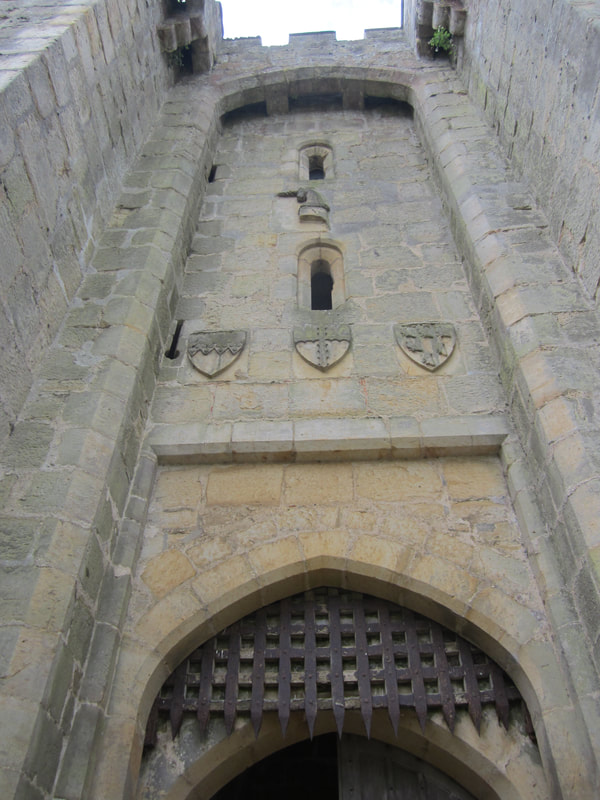|
From Fletching to Bodiam This is a story of how important daughters can be! In the mid-13th Century, Lady Ascelina de Dyve was the 'Lord' of Sheffield Manor in the Parish of Fletching. The de Dyve family were important landholders in Sussex and the Midlands from the time of the Norman Conquest. Ascelina was the widow of Simon Mucegros - their children were John, Alice and Agatha. Only Agatha survived to continue the line and she married Walter de Ratinden, bringing Sheffield and Fletching lands to him. Interestingly, the Ratinden arms were "Azure, six martlets 3, 2, 1" - known today as the 'logo' of Sussex. Walter and Agatha had one son, John, who saw military service abroad under Edward I and Edward II between 1296 and 1322, thereafter a county administrator, M.P. and sheriff of Sussex until his death around 1350. Of John's three daughters, only Alice was living by this date but he had made a good marriage for her with an up and coming local gentry family, the Dalingridges. By 1356 Alice and Roger Dalingridge were the owners of many manors in Sussex and other parts of England. Roger followed a career similar to his father-in-law, making Fletching his 'home base'. There is evidence that they had five children: Edward, Walter, Katherine, Joan and Margaret. The monumental brass tomb in the south transcept of Fletching church is that of Roger and his first wife, Alice of Ratinden. By 1362 Alice had died as in that year Roger married another Alice, the widow of Sir Thomas St Maur, who brought him, as her dowry, the lands of Sheffield St Maur and la Denne (Danehill). The pedigree of the Dalingridge family is nowhere written down completely and has numerous errors. Only by looking back at contemporary documents can one gain a true insight into this enigmatic family. We have all heard about Edward Dalingridge, builder of Bodiam Castle. That he was the son of Roger Dalingridge and Alice de Ratinden of Fletching can be shown in three different pieces of evidence. Firstly, the clue that has been staring us in the face for over 600 years - above the main gateway of Bodiam Castle are three stone coats of arms. On the left that of Edward's wife, Elizabeth Wardieu of Bodiam; in the centre, the red engrailed cross of Dalingridge; on the right, the Ratinden arms with the six martlets (legendary birds) of Edward's mother Alice. Secondly, amongst the History of Parliament papers is a description of depositions taken in 1386 from knights and gentry as to the respective entitlement of Sir Robert Grosvenor and Richard Lord Scrope to bear the same contested coat of arms. Sir Edward Dalingridge was one of those giving evidence. "This individual was the son of Roger Dalingrigge the representative of an ancient family in the County of Sussex and was born about the year 1346 ..." The third piece of the puzzle is from a document of 1443. It is the inquisition post mortem (IPM) of Alice, widow of Sir Thomas Boteller, and after the wife of Edward Dalingridge's son John. John had no children and when he died in 1407 he left his lands to his wife and following her death they were to revert to his uncle Walter's sons, William and Richard Dalingridge, his cousins. When Alice died only Richard was living so he became the sole heir. Now take a deep breath and read how all is explained at the very end of the IPM delivered to the court in 1443. "John Dalyngrugg died without heir of his body. William son of Walter died without heir male of his body. Richard Dalyngrugg is the son and heir of Walter Dalyngrugg and kin and heir of John Dalyngrugg, Knight, as the son of Walter, the son of Roger, the father of Edward, the father of John Dalyngrugg, Knight." So perhaps the dream of Bodiam Castle began when Edward spent his boyhood in Fletching. Geraldine Crawshaw, 1 October 2020 References:
|




